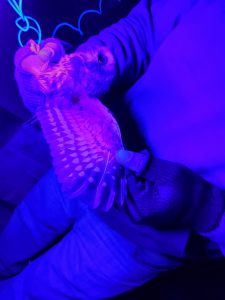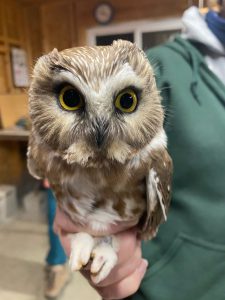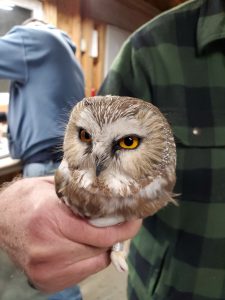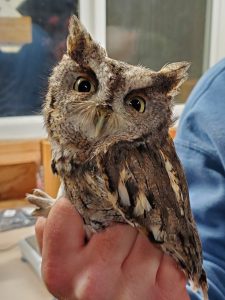Biology Professor Tony Rothering led a nocturnal banding this past weekend targeting a migratory owl species — the Northern Saw-whet Owl (NSWO). They banded six of the owls, and the seventh was a foreign recapture (meaning it was already banded by another bander/banding station). That particular bird was banded last year (2019) near Duluth, Minnesota. These recaptures provide information on distribution, longevity, migration pattern and habitat requirements. They also banded two Eastern Screech Owls (EASO). Professor Rothering says COVID-19 restrictions prevent them from inviting the public to the LLCC bird banding station at this time, but hopefully next year!

Northern Saw-whet owl in black light. The black light helps to age the bird as certain pigments (called porphyrins that naturally fluoresce when exposed to UV light) degrade fairly quickly when exposed to sunlight. The owl in the black light photo has relatively new feathers that have a consistent pink fluorescence, which tells us this bird hatched this year (2020).



